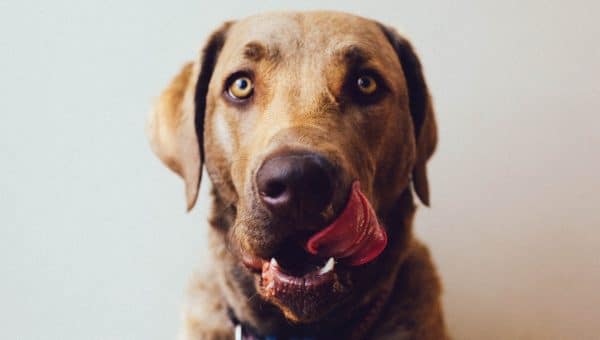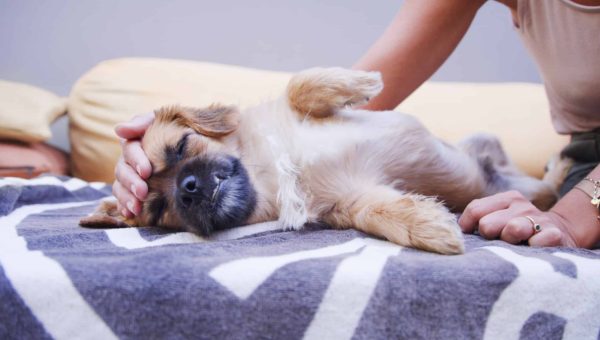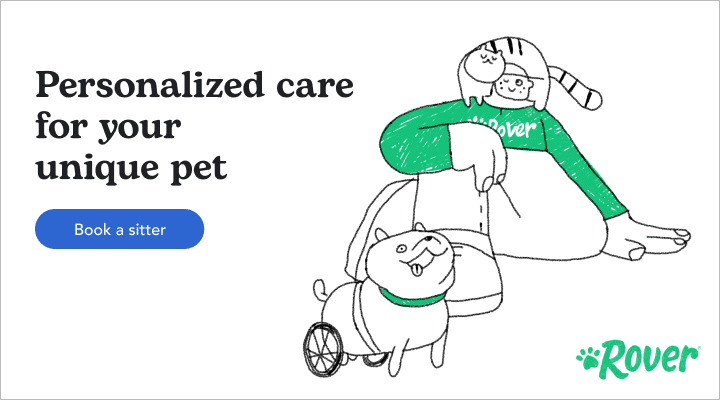- Not a substitute for professional veterinary help.
We’ve seen it before: our dogs catching some zzz’s, followed shortly after by adorable noises, twitches, and moves in their sleep. We might think of these behaviors as “puppy dreams.” Dog dreams are completely normal but may differ from how humans understand dreams.
Becky Simmonds, a professional dog trainer and behaviorist at Breed Advisor, says that dogs dream and go through REM sleep when dreams occur. However, she explains that differences in a dog’s brain structure suggest they don’t experience visual imagery like we do while asleep. They fall into a very deep sleep, but there is no evidence to suggest they see themselves in their dreams as we do.
Dreams can reflect your dog’s daily experiences, like playing fetch and running. However, they can also point to emotional, physical, or psychological distress if they’re nightmares. Additionally, some disorders can lead to excessive movement or activity during your dog’s dreams. We spoke with veterinarians to learn more about dog dreams and nightmares, sleep disorders in dogs, and how you can create a comfortable experience for your sleepy pooch.
4 Signs Your Dog Is Dreaming
Simmonds explains there are hallmark signs of dog dreaming, including the following. However, she adds that if your dog is excessively shaking or moving in their sleep, it may suggest they suffer from a sleep disorder. If you’re unsure, it’s always wise to consult your vet.
- Twitching. Involuntary twitches are completely everyday occurrences and are known as hypnic jerks. Dogs can experience them too!
- Quivering. This is another typical sign of dog dreaming and is an involuntary spasm that looks as if your dog is acting out their dreams.
- Murmuring, barking, or howling. Some pet parents say their dogs chase rabbits in their dreams when they hear them bark or howl. Although what they’re dreaming about is mostly a mystery, these vocalizations are normal.
- Sleepwalking or running. Another painfully cute sign of dreaming is sleepwalking or running. Your dog may move their paws back and forth as if they’re on a walk or run with you.
Like us, dogs dream during REM sleep
Like humans, dogs experience rapid eye movement (REM) sleep. Although seeing your dog twitch in their sleep can be a bit puzzling and even startling at first sight, this behavior can suggest certain activities like running, chasing, or playing.
A study surveyed 1,091 pet parents and found that 391 (37.5%) said their dog “dreams a lot.” Even though this doesn’t provide much to go on quantitatively, it shows just how often dreaming behaviors are observed in dogs.
Although human and canine psychologies differ, our brains are similar, and we move through similar sleep stages at different rates. While these similarities exist, projecting human emotions, dreams, and nightmares onto dogs doesn’t help understand precisely how and why dogs dream.

iStock/fotyma
Do Dogs Dream About Us And Their Lives?
We can’t help but wonder what goes on in our dogs’ dreams. Unlimited delicious treats? Mountains of dog toys? A soon-to-be play date at the dog park?
There’s no evidence dogs can “imagine” things, so dogs may dream from memory. While we’re unable to see what happens inside a dog’s mind or understand the exact content of their dreams (yet), Simmonds says we know that dogs may dream about familiar places and people.
“Research shows that dogs display similar movements in dreams as they do in real life,” she says. “For example, if they love to play fetch while awake, they may show facial twitches and leg kicks during REM sleep.”
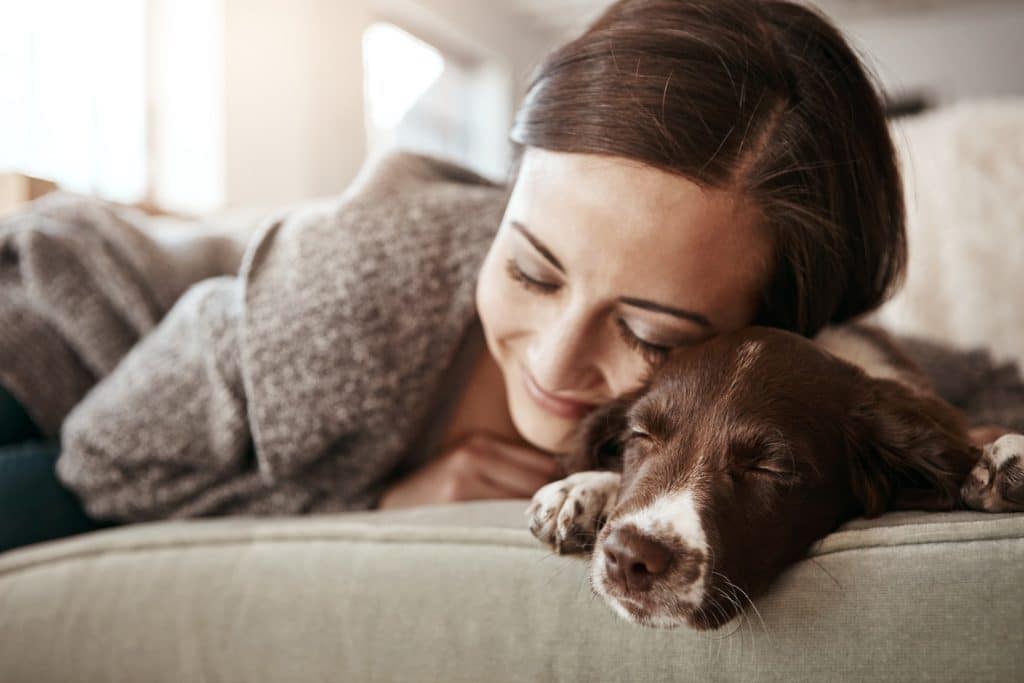
iStock/gradyreese
It’s hard to know who or what dogs are chasing or playing with in dreams. However, if they draw from daily experience for dreams and you’re a key part of that everyday experience, Simmonds says it’s a possibility they dream about us.
“Much more research is needed for us to fully understand this, but we can hope!” she says.
Do Dog Breeds Dream Differently From Each Other?
Simmonds says, interestingly enough, smaller dog breeds are prone to more bursts of brain activity while they sleep than larger breeds, suggesting they dream more often and more intensely.
“According to research from veterinary behaviorists, REM cycles can be observed in all dogs regardless of size, but smaller dogs may experience them more frequently,” she explains. “It’s thought that puppies may even experience two or three distinct REM cycles per night compared to the one experienced by adult dogs.”
The frequency and length of dreams may not only depend on size, she says, but also on how active the dog has been. For example, if a dog has been highly active throughout the day, they may have longer dreams since they’ll enter deep sleep for longer.
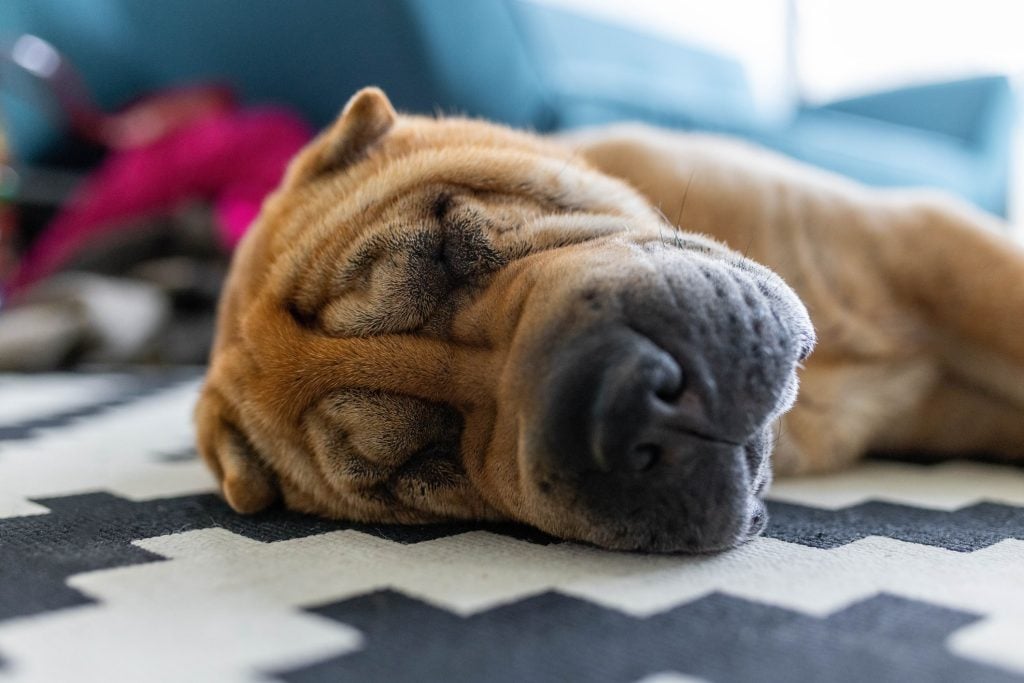
iStock/SolStock
Can Dogs Have Nightmares?
Unfortunately, we’re not the only ones who can have bad dreams; dogs can too. Again, the causes are unclear; just as in humans, memories of trauma (such as in rescue dogs) or physical pain may trigger nightmares.
There are several potential causes behind why a dog might begin having bad dreams. Many can be traced back to their health and stress. One condition that may bring on sudden nightmares is cognitive dysfunction syndrome (CDS). CDS is a common, progressive neurodegenerative disorder that affects dogs, typically nine years old and older. This can cause behavioral changes in dogs, similar to how Alzheimer’s disease does humans.
Although there’s no cure for CDS at the moment, several treatments available can help. Patrik Holboe, DVM, head veterinarian at Cooper Pet Care, says other cognitive or physical issues that may drive nightmares include:
When in doubt, consult your vet to determine the underlying cause behind your dog’s nightmares.
How to calm doggy nightmares
Whether you have a rescue dog or a naturally nervous dog, providing a comfortable environment can help them feel safe and secure.
Holmboe shares tips on how to reduce nighttime fear, such as:
- Establish a routine. Dogs thrive on routine, so keeping the same actions simultaneously helps them feel safe and comfortable. “Practically, this means having a similar pre-sleep routine every day and trying to keep sleep times similar every day,” he says.
- Make their sleep area as calm and comfortable as possible. “For example, don’t have the dog bed next to a loud washing machine or dishwasher,” Holmboe says. “A crate is ideal where you can cover it and keep favorite toys and chew items inside. A soft, properly sized bed is, of course, also essential.”
- Use positive reinforcement to make sleep time a happy time! Holmboe uses an example of giving your dog a chew toy filled with a small amount of peanut butter every time before bed to help your dog associate bedtime with a positive experience. This ultimately makes them look forward to it.

iStock/Rhys Leonard
>When Is It OK to Wake a Dog?
Reading your dog’s body language and sounds are essential, including while they’re asleep. Nightmares can be an unpleasant experience, and it can be tricky as a pet parent deciding whether or not to wake your dog.
You should wake your dog if they’re gently whining, distressed, or suddenly biting or startled. If you decide to wake your dog, Holmboe recommends doing so as calmly as possible by softly calling their name or placing a tasty treat in front of their nose.
Leave a dog alone when…
Holmboe cautions that there are some circumstances when you should avoid waking your sleeping dog, especially when they’re having a nightmare. For example, if your dog does the following, don’t wake them up.
- Raised hackles
- Bared teeth
- Growling
“If the nightmare is particularly intense, do be a bit careful about touching your dog, especially around the mouth, as they might wake in a panic and even bite,” Holmboe says. In these cases, it’s often better to let the nightmare pass and be on-hand to provide comfort when they wake up.
What Sleep Disorders Can Dogs Have?
If your dog has trouble sleeping or has nightmares more frequently, they may have a sleep disorder. Dogs may experience the following sleep disorders:
- REM sleep behavior disorder. This disorder can cause violent limb movements, howling, barking, chewing, or biting when sleeping both during the daytime and nighttime. This sleep disorder can be treated with oral potassium bromide.
- Narcolepsy. Narcolepsy in dogs happens due to a deficit in hypocretin and orexin neurotransmission and can sporadically affect up to 17 breeds of dogs, such as Dobermans, Labrador Retrievers, and Dachshunds. Symptoms of narcolepsy include shorter sleep and sudden muscle loss and control. Narcolepsy requires lifelong treatment and care and can be treated with imipramine.
- Obstructive sleep apnea. Obstructive sleep apnea (OSA) is an uncommon sleep disorder that affects dogs more prone to pharyngeal collapse (i.e., English bulldogs) and obesity. Signs of OSA may include apnea (i.e., breathing stops and restarts), snoring, and excessive sleepiness. Treatment consists of a weight loss plan and ondansetron or other serotonin antagonists.
Consult your vet if your dog shows any signs of sleep disorders; some may be life-threatening if left untreated.

iStock/TatyanaGl
How To Improve Your Dog’s Sleep
We have our unique routines to help us feel more relaxed before bed. We can do the same for our dogs. While you know what helps bring your dog the most comfort, Holmboe shares a few tips you can try to make their space extra cozy, such as:
- Keeping the bed comfortable in a safe, dark, and quiet environment
- Providing a soft, properly sized bed that your dog can ideally stretch out on
- Placing their favorite toys and chew items nearby
Holmboe says that although it’s hard to tell if a cozy environment affects a dog’s dreams and reduces the risk of nightmares, it certainly can’t hurt. However, he adds that there’s no question a dog who feels safe and comfortable at all times of the day will likely have a higher quality of life and a stronger bond with their pet parent.
Holmboe says other tips to help your dog sleep better include setting a schedule and providing plenty of opportunities to rest and sleep during the day.
“In general, dogs—and especially puppies—need more sleep than we think they do. For example, puppies should [sleep] 18-20 hours a day,” he says. Generally, Holmboe concludes that well-rested dogs are calmer, more relaxed, and more comfortable throughout the day.


